Abstract
Using a conditioned suppression procedure, the effects of three contingent relationships between conditioned (CS) and unconditioned (US) stimuli were investigated. A traditional positive (if CS—then US) contingency suppressed response rate during the CS relative to responding during stimulus-free minutes of the session. A negative (if CS—then no US) contingency resulted in suppressed responding during CS-off minutes, and rate increases during the CS. A no-contingency control procedure, during which CS and US were randomly related, almost totally suppressed responding throughout the session and showed no differential effects of the CS on response rate. An analysis of changes in response rate during the minute after US-offset revealed acceleration under the no-contingency condition and, to a somewhat lesser degree, under the negative contingency. Both conditioned suppression and non-suppression are analyzed in terms of the temporal relationship between CS and US.
Full text
PDF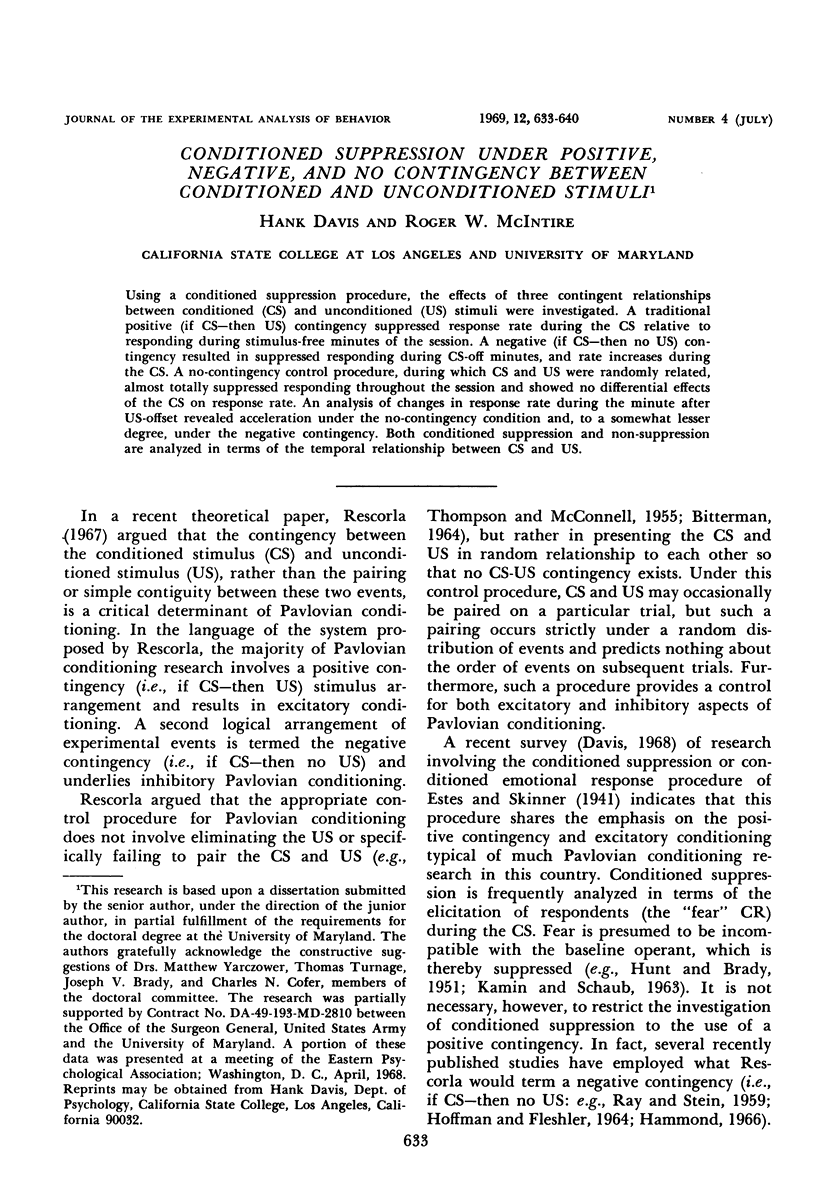
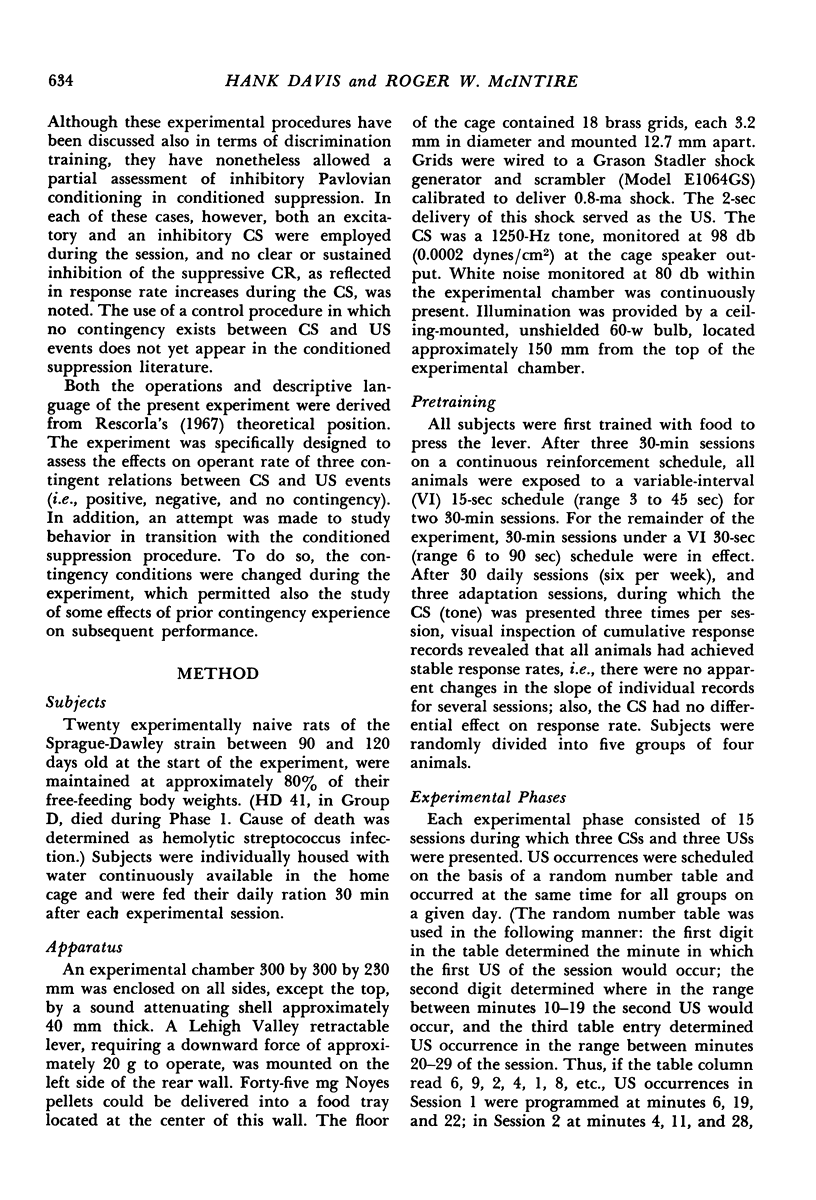
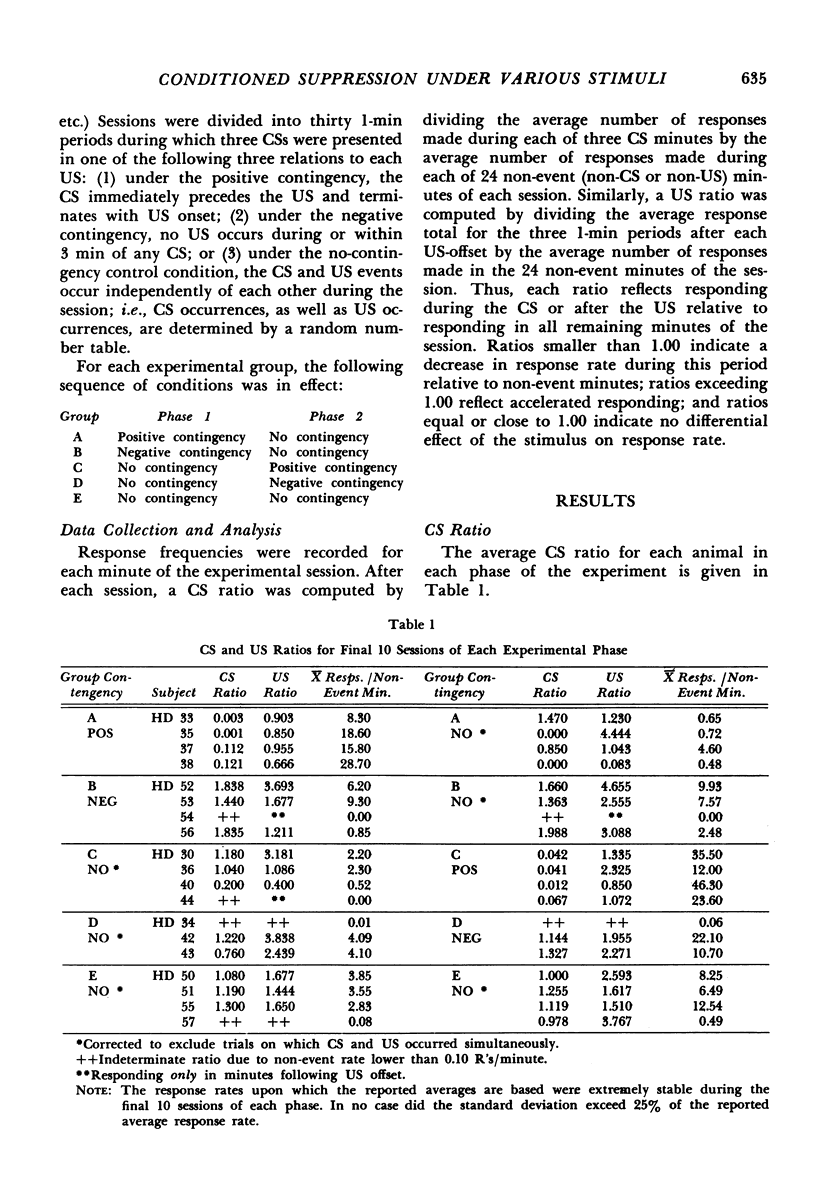

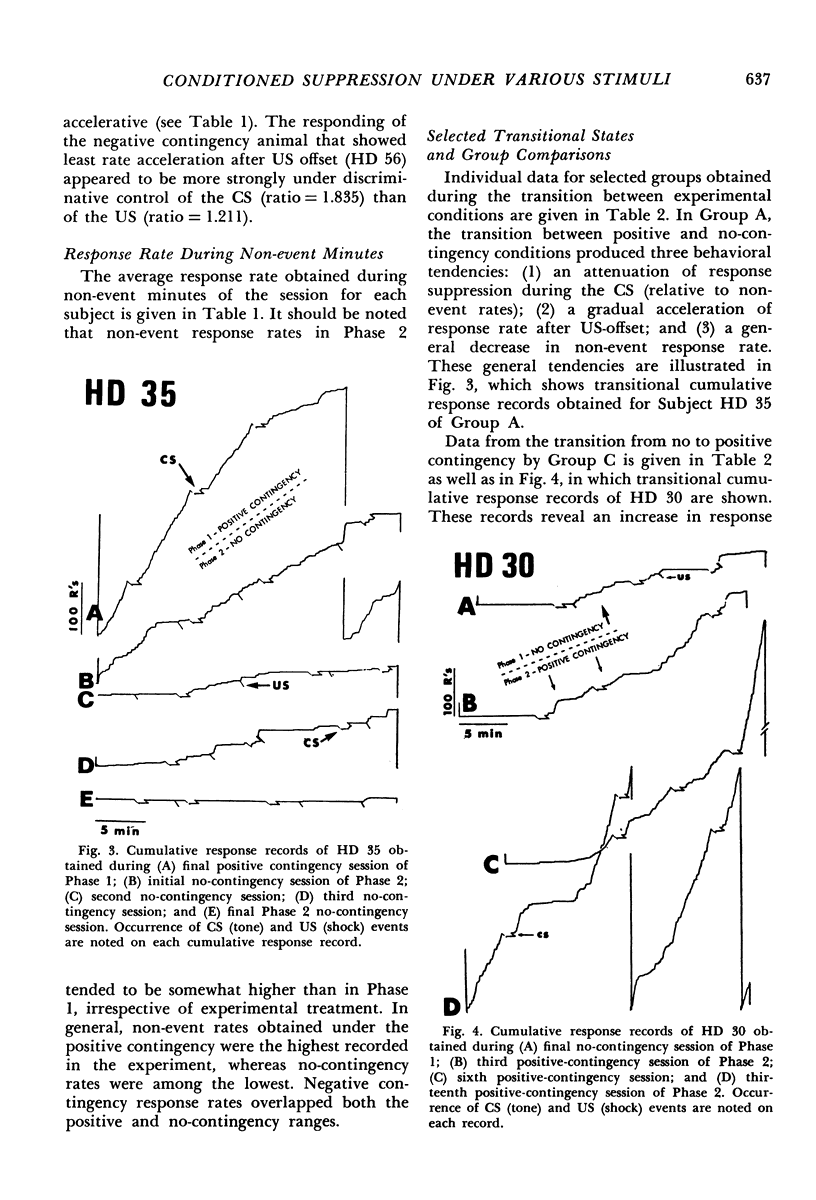
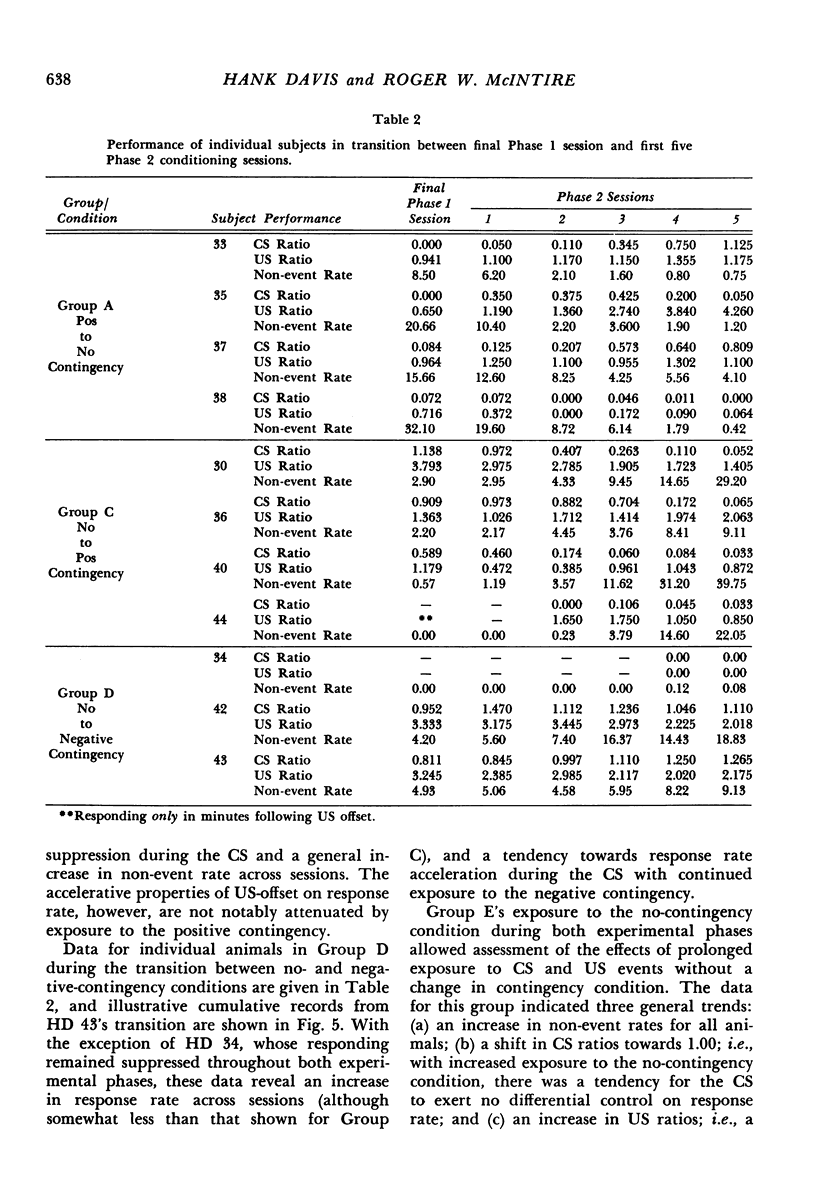
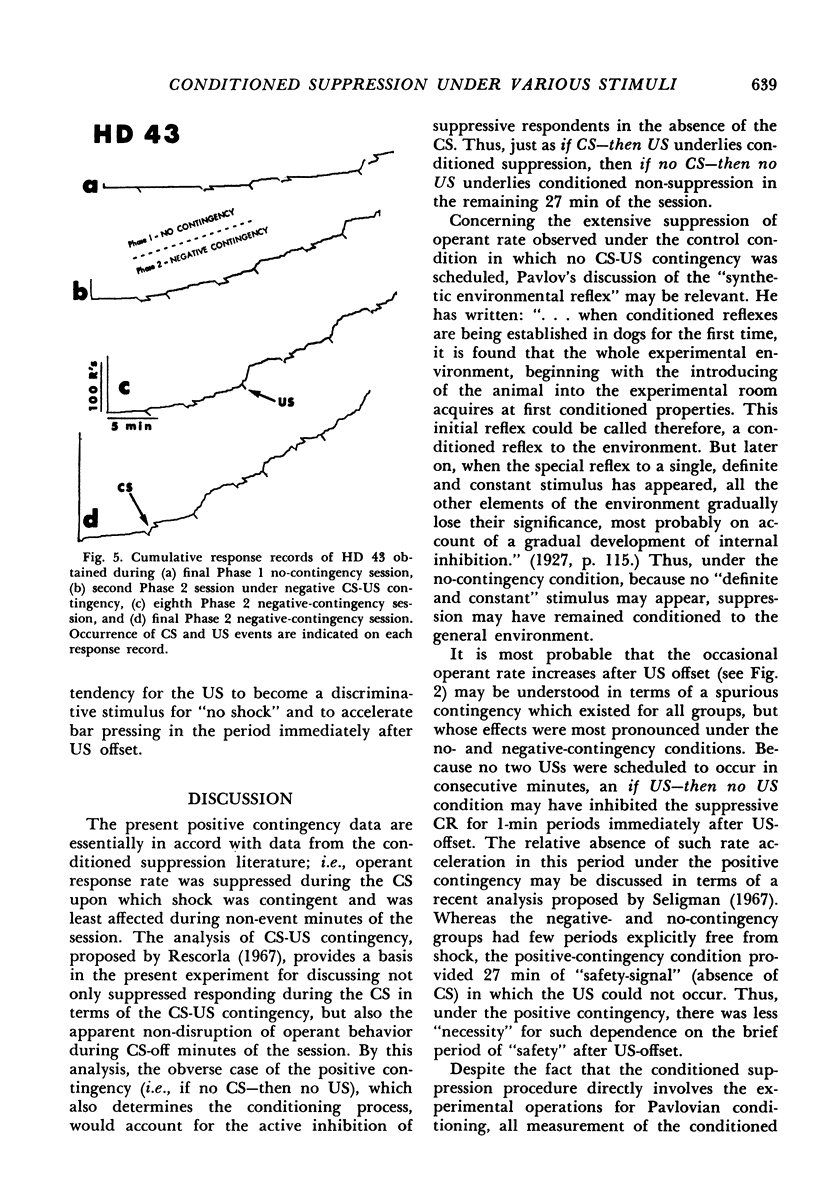
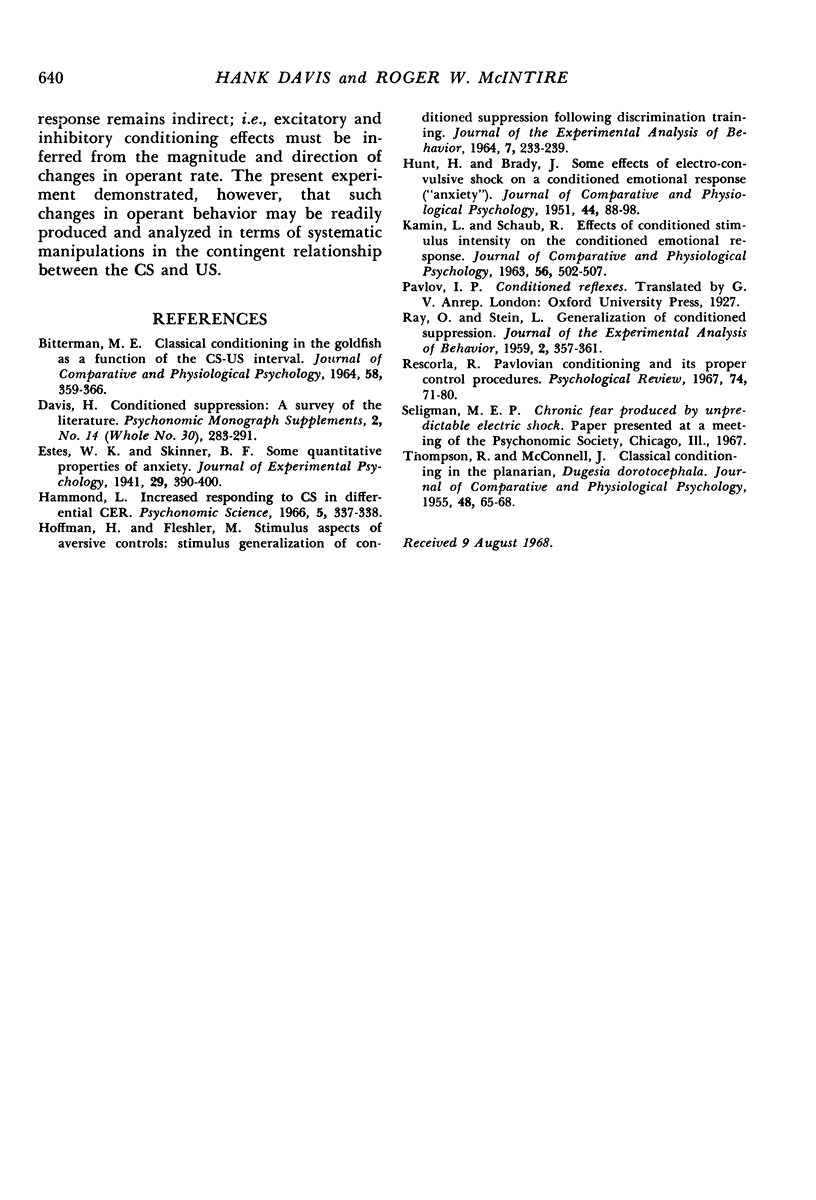
Selected References
These references are in PubMed. This may not be the complete list of references from this article.
- BITTERMAN M. E. CLASSICAL CONDITIONING IN THE GOLDFISH AS A FUNCTION OF THE CS-US INTERVAL. J Comp Physiol Psychol. 1964 Dec;58:359–366. doi: 10.1037/h0046793. [DOI] [PubMed] [Google Scholar]
- HOFFMAN H. S., FLESHLER M. STIMULUS ASPECTS OF AVERSIVE CONTROLS: STIMULUS GENERALIZATION OF CONDITIONED SUPPRESSION FOLLOWING DISCRIMINATION TRAINING. J Exp Anal Behav. 1964 May;7:233–239. doi: 10.1901/jeab.1964.7-233. [DOI] [PMC free article] [PubMed] [Google Scholar]
- HUNT H. F., BRADY J. V. Some effects of electro-convulsive shock on a conditioned emotional response ("anxiety"). J Comp Physiol Psychol. 1951 Feb;44(1):88–98. doi: 10.1037/h0059967. [DOI] [PubMed] [Google Scholar]
- RAY O. S., STEIN L. Generalization of conditioned suppression. J Exp Anal Behav. 1959 Oct;2:357–361. doi: 10.1901/jeab.1959.2-357. [DOI] [PMC free article] [PubMed] [Google Scholar]
- Rescorla R. A. Pavlovian conditioning and its proper control procedures. Psychol Rev. 1967 Jan;74(1):71–80. doi: 10.1037/h0024109. [DOI] [PubMed] [Google Scholar]
- THOMPSON R., McCONNELL J. Classical conditioning in the planarian, Dugesia dorotocephala. J Comp Physiol Psychol. 1955 Feb;48(1):65–68. doi: 10.1037/h0041147. [DOI] [PubMed] [Google Scholar]


